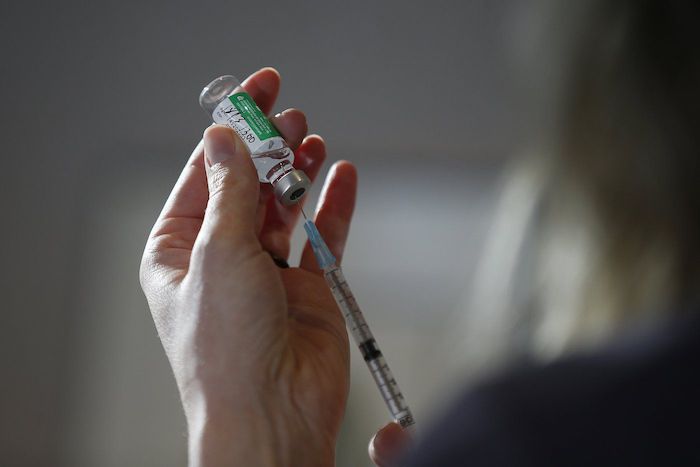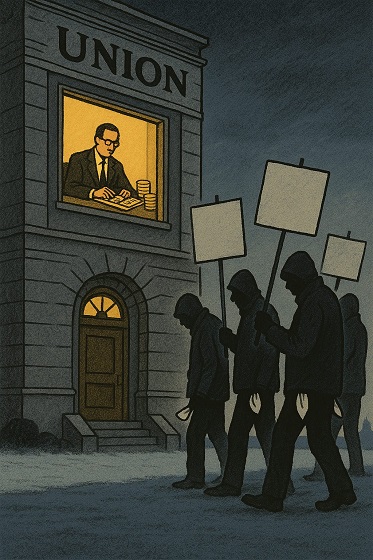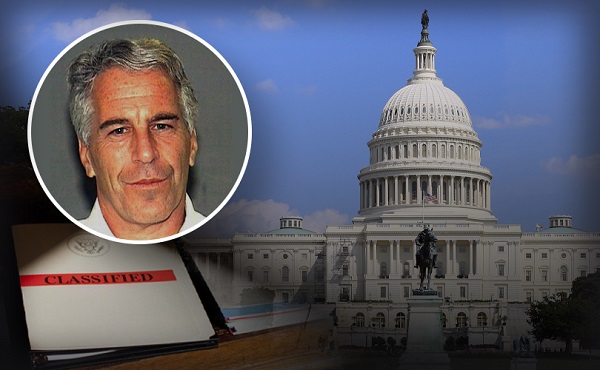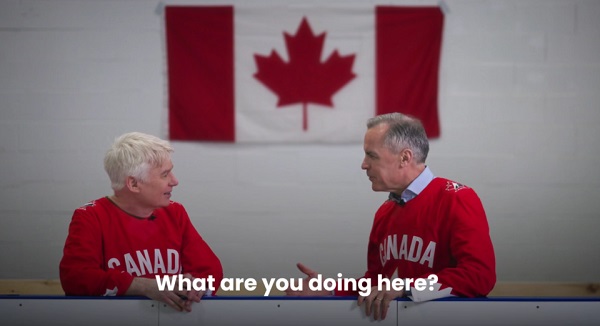Brownstone Institute
Had You Known, Would You Have Taken the Jab?

From the Brownstone Institute
” the company skewed the public debate in order to induce Americans to take its shots. The efforts stripped us of the right to informed consent, deceiving us on purported benefits while hiding established risks “
Would 92% of American adults have gotten a Covid shot had they known the “vaccines” only offered a 0.85% reduction in risk? Would young men have taken the jab if they had known it did not prevent transmission?
Americans came to understand that the media campaigns supporting the shots were fraudulent. The touted benefits – preventing infection and transmission – were lies. In response, fewer than one in five Americans elected to receive “boosters” despite multi-billion dollar propaganda campaigns.
Texas Attorney General Ken Paxton has now brought a suit to bring accountability for the fraud that resulted in record profits for the pharmaceutical industry. Paxton filed a complaint alleging that Pfizer misrepresented Covid vaccine efficacy and “conspired to censor public discourse” in violation of Texas’s Deceptive Trade Practices Act (DTPA).
While Big Pharma enjoys immense government-provided insulation from legal liability for vaccine injuries, it cannot lie to promote those products.
Paxton alleges that the $75 billion Pfizer has raked in through sales of Covid vaccines were the “direct and proximate result” of the company’s deceit.
The DTPA requires Paxton prove two questions to succeed in his case. First, he must establish that the company lied or failed to disclose known information concerning its Covid vaccine. Second, he must prove that the company’s fraud was designed to promote sales of the shots.
Brownstone previously analyzed the applicability of the DTPA against Moderna. Now, Paxton’s lawsuit threatens Pfizer with fines of $10 million as well as awards of “restitution, damages, or civil penalties.”
Paxton’s case argues that Pfizer deceived the public on three issues: (1) the efficacy of the vaccine; (2) whether the shots reduced the risk of transmission; and (3) the company’s efforts to “censor[] persons who threatened to disseminate the truth.”
In each instance, the company skewed the public debate in order to induce Americans to take its shots. The efforts stripped us of the right to informed consent, deceiving us on purported benefits while hiding established risks.
Efficacy
First, Paxton targets the now-familiar falsehoods that the company, led by CEO Albert Bourla, touted, including that the shots had “95% efficacy” and worked against mutations of the virus.
Paxton’s critiques do not require the benefit of hindsight. Pfizer’s own data showed that the vaccine was merely 0.85% effective in reducing the likelihood that an individual would contract Covid (known as absolute risk reduction). Put differently, Pfizer’s clinical data showed that “preventing one COVID-19 case required vaccinating 119.”
Despite this unconvincing data, Bourla claimed there was “initial evidence of our vaccine’s ability to prevent Covid-19.” Bourla later said that the shots had “100%” efficacy rates against mutations of the virus, including the Delta variant. Not only was this a lie, Pfizer never tested the shots against the variants. Still, in May 2021 he baselessly claimed that “no variant identified so far…escapes the protection of our vaccine.”
Three months later, the company issued a press release saying that boosters would “preserve and even exceed the high levels of protection against…relevant variants.” Shortly thereafter, the United States exercised its option to purchase 500 million more doses of Pfizer’s Covid vaccines.
These lies clearly and directly induced Americans to take products with illusory benefits. The claims were fabricated, and they led to billions of dollars in windfalls for Bourla and Pfizer.
Transmission
Pfizer’s marketing relied on convincing healthy young adults and teenagers to get shots despite the negligible risk that Covid posed to them. Bourla used transmission to launch a moral blackmail campaign. He told teenagers that they should get the shots to “protect…their loved ones.” He later tweeted, “widespread vaccination is a critical tool to help stop transmission.”
Under oath, company officials later admitted that they had never tested whether the vaccines reduced transmission.
In October 2022, Pfizer spokeswoman Janine Small appeared at a European Parliament hearing. “Was the Pfizer Covid vaccine tested on stopping transmission of the virus before it entered the market?” asked Dutch MEP Rob Roos. “No!” Small responded emphatically. “We had to really move at the speed of science to really understand what is taking place in the market; and from that point of view, we had to do everything at risk.”
Under the DTPA, Paxton must prove that the company misrepresented information regarding the vaccine in an effort to promote sales of its products. With the vast majority of Americans under 70 facing zero substantial risk from Covid infection, the lies regarding transmission were critical to expand the customer base.
This deception underpinned the mandates in 2021 as government and corporate officials insisted that vaccination was necessary to keep healthy adults’ coworkers and neighbors safe. By December 2021, Pfizer’s stock price had doubled from the onset of the pandemic in February 2020.
Censorship
As Pfizer committed to deceiving the public, it had to ensure that journalists would not uncover its corporate misdeeds. Paxton’s suit outlines how the company “sought to intimidate and silence…journalist Alex Berenson.”
As Berenson reported on the efficacy, or lack thereof, of mRNA “vaccines,” Pfizer Board Member Dr. Scott Gottlieb colluded with Twitter to silence his reporting. In August 2021, Berenson tweeted that Pfizer’s vaccine “doesn’t stop infection…[o]r transmission,” and had a“limited window of efficacy.” Despite the veracity of these statements, Gottlieb wrote to Twitter officials encouraging them to ban Berenson’s heresy.
Hours later, Berenson received a permanent ban (he was later reinstated following a lawsuit). Now, Pfizer CEO Albert Bourla is a defendant in Berenson’s case against the Biden Administration, which accuses White House officials of colluding with private actors in Big Tech and Big Pharma to usurp Berenson’s First Amendment rights.
Paxton’s case also outlines how Pfizer worked to silence scientists who discussed the benefits of natural immunity, calling the rhetoric “corrosive” to the public’s confidence in their products. The aim was simple: shield Americans from the truth so that they would continue to get the product.
A Rare Opportunity to Strike Back
To this point, “victories” against the hegemon that emerged in 2020 have been defensive in nature. Groups have fended off vaccine mandates, states have resisted calls for renewed lockdowns, and journalists have begun to expose the corruption that shattered Western civilization.
These efforts, though important, have failed to bring accountability against those who usurped our civil liberties and pillaged the national treasury. Paxton’s suit strikes at the heart of the corruption behind the Covid regime: how their success required mass deception and their profits depended on lies.
Though $10 million in fines is little compared to the $75 billion in revenue that Pfizer raked in from vaccines alone, the suit signifies that the resistance is at last on the offensive.
Big Pharma sees this is a grave threat, and its lobbying forces led a failed impeachment effort against Paxton this fall. They threw him out of his office, and disabled his ability to do his job that the voters sent him to do. Turning up nothing, the legislature rejected the entire drama. Now he is back and working and this is the result: accountability at last.
The steep drop in demand for Covid shots reveals how Pfizer depended upon fraud to promote their most lucrative product. Once Americans knew the truth, demand dropped by over 75%.
Now, Paxton’s suit brings that fraud to trial.
Brownstone Institute
Bizarre Decisions about Nicotine Pouches Lead to the Wrong Products on Shelves

From the Brownstone Institute
A walk through a dozen convenience stores in Montgomery County, Pennsylvania, says a lot about how US nicotine policy actually works. Only about one in eight nicotine-pouch products for sale is legal. The rest are unauthorized—but they’re not all the same. Some are brightly branded, with uncertain ingredients, not approved by any Western regulator, and clearly aimed at impulse buyers. Others—like Sweden’s NOAT—are the opposite: muted, well-made, adult-oriented, and already approved for sale in Europe.
Yet in the United States, NOAT has been told to stop selling. In September 2025, the Food and Drug Administration (FDA) issued the company a warning letter for offering nicotine pouches without marketing authorization. That might make sense if the products were dangerous, but they appear to be among the safest on the market: mild flavors, low nicotine levels, and recyclable paper packaging. In Europe, regulators consider them acceptable. In America, they’re banned. The decision looks, at best, strange—and possibly arbitrary.
What the Market Shows
My October 2025 audit was straightforward. I visited twelve stores and recorded every distinct pouch product visible for sale at the counter. If the item matched one of the twenty ZYN products that the FDA authorized in January, it was counted as legal. Everything else was counted as illegal.
Two of the stores told me they had recently received FDA letters and had already removed most illegal stock. The other ten stores were still dominated by unauthorized products—more than 93 percent of what was on display. Across all twelve locations, about 12 percent of products were legal ZYN, and about 88 percent were not.
The illegal share wasn’t uniform. Many of the unauthorized products were clearly high-nicotine imports with flashy names like Loop, Velo, and Zimo. These products may be fine, but some are probably high in contaminants, and a few often with very high nicotine levels. Others were subdued, plainly meant for adult users. NOAT was a good example of that second group: simple packaging, oat-based filler, restrained flavoring, and branding that makes no effort to look “cool.” It’s the kind of product any regulator serious about harm reduction would welcome.
Enforcement Works
To the FDA’s credit, enforcement does make a difference. The two stores that received official letters quickly pulled their illegal stock. That mirrors the agency’s broader efforts this year: new import alerts to detain unauthorized tobacco products at the border (see also Import Alert 98-06), and hundreds of warning letters to retailers, importers, and distributors.
But effective enforcement can’t solve a supply problem. The list of legal nicotine-pouch products is still extremely short—only a narrow range of ZYN items. Adults who want more variety, or stores that want to meet that demand, inevitably turn to gray-market suppliers. The more limited the legal catalog, the more the illegal market thrives.
Why the NOAT Decision Appears Bizarre
The FDA’s own actions make the situation hard to explain. In January 2025, it authorized twenty ZYN products after finding that they contained far fewer harmful chemicals than cigarettes and could help adult smokers switch. That was progress. But nine months later, the FDA has approved nothing else—while sending a warning letter to NOAT, arguably the least youth-oriented pouch line in the world.
The outcome is bad for legal sellers and public health. ZYN is legal; a handful of clearly risky, high-nicotine imports continue to circulate; and a mild, adult-market brand that meets European safety and labeling rules is banned. Officially, NOAT’s problem is procedural—it lacks a marketing order. But in practical terms, the FDA is punishing the very design choices it claims to value: simplicity, low appeal to minors, and clean ingredients.
This approach also ignores the differences in actual risk. Studies consistently show that nicotine pouches have far fewer toxins than cigarettes and far less variability than many vapes. The biggest pouch concerns are uneven nicotine levels and occasional traces of tobacco-specific nitrosamines, depending on manufacturing quality. The serious contamination issues—heavy metals and inconsistent dosage—belong mostly to disposable vapes, particularly the flood of unregulated imports from China. Treating all “unauthorized” products as equally bad blurs those distinctions and undermines proportional enforcement.
A Better Balance: Enforce Upstream, Widen the Legal Path
My small Montgomery County survey suggests a simple formula for improvement.
First, keep enforcement targeted and focused on suppliers, not just clerks. Warning letters clearly change behavior at the store level, but the biggest impact will come from auditing distributors and importers, and stopping bad shipments before they reach retail shelves.
Second, make compliance easy. A single-page list of authorized nicotine-pouch products—currently the twenty approved ZYN items—should be posted in every store and attached to distributor invoices. Point-of-sale systems can block barcodes for anything not on the list, and retailers could affirm, once a year, that they stock only approved items.
Third, widen the legal lane. The FDA launched a pilot program in September 2025 to speed review of new pouch applications. That program should spell out exactly what evidence is needed—chemical data, toxicology, nicotine release rates, and behavioral studies—and make timely decisions. If products like NOAT meet those standards, they should be authorized quickly. Legal competition among adult-oriented brands will crowd out the sketchy imports far faster than enforcement alone.
The Bottom Line
Enforcement matters, and the data show it works—where it happens. But the legal market is too narrow to protect consumers or encourage innovation. The current regime leaves a few ZYN products as lonely legal islands in a sea of gray-market pouches that range from sensible to reckless.
The FDA’s treatment of NOAT stands out as a case study in inconsistency: a quiet, adult-focused brand approved in Europe yet effectively banned in the US, while flashier and riskier options continue to slip through. That’s not a public-health victory; it’s a missed opportunity.
If the goal is to help adult smokers move to lower-risk products while keeping youth use low, the path forward is clear: enforce smartly, make compliance easy, and give good products a fair shot. Right now, we’re doing the first part well—but failing at the second and third. It’s time to fix that.
Addictions
The War on Commonsense Nicotine Regulation

From the Brownstone Institute
Cigarettes kill nearly half a million Americans each year. Everyone knows it, including the Food and Drug Administration. Yet while the most lethal nicotine product remains on sale in every gas station, the FDA continues to block or delay far safer alternatives.
Nicotine pouches—small, smokeless packets tucked under the lip—deliver nicotine without burning tobacco. They eliminate the tar, carbon monoxide, and carcinogens that make cigarettes so deadly. The logic of harm reduction couldn’t be clearer: if smokers can get nicotine without smoke, millions of lives could be saved.
Sweden has already proven the point. Through widespread use of snus and nicotine pouches, the country has cut daily smoking to about 5 percent, the lowest rate in Europe. Lung-cancer deaths are less than half the continental average. This “Swedish Experience” shows that when adults are given safer options, they switch voluntarily—no prohibition required.
In the United States, however, the FDA’s tobacco division has turned this logic on its head. Since Congress gave it sweeping authority in 2009, the agency has demanded that every new product undergo a Premarket Tobacco Product Application, or PMTA, proving it is “appropriate for the protection of public health.” That sounds reasonable until you see how the process works.
Manufacturers must spend millions on speculative modeling about how their products might affect every segment of society—smokers, nonsmokers, youth, and future generations—before they can even reach the market. Unsurprisingly, almost all PMTAs have been denied or shelved. Reduced-risk products sit in limbo while Marlboros and Newports remain untouched.
Only this January did the agency relent slightly, authorizing 20 ZYN nicotine-pouch products made by Swedish Match, now owned by Philip Morris. The FDA admitted the obvious: “The data show that these specific products are appropriate for the protection of public health.” The toxic-chemical levels were far lower than in cigarettes, and adult smokers were more likely to switch than teens were to start.
The decision should have been a turning point. Instead, it exposed the double standard. Other pouch makers—especially smaller firms from Sweden and the US, such as NOAT—remain locked out of the legal market even when their products meet the same technical standards.
The FDA’s inaction has created a black market dominated by unregulated imports, many from China. According to my own research, roughly 85 percent of pouches now sold in convenience stores are technically illegal.
The agency claims that this heavy-handed approach protects kids. But youth pouch use in the US remains very low—about 1.5 percent of high-school students according to the latest National Youth Tobacco Survey—while nearly 30 million American adults still smoke. Denying safer products to millions of addicted adults because a tiny fraction of teens might experiment is the opposite of public-health logic.
There’s a better path. The FDA should base its decisions on science, not fear. If a product dramatically reduces exposure to harmful chemicals, meets strict packaging and marketing standards, and enforces Tobacco 21 age verification, it should be allowed on the market. Population-level effects can be monitored afterward through real-world data on switching and youth use. That’s how drug and vaccine regulation already works.
Sweden’s evidence shows the results of a pragmatic approach: a near-smoke-free society achieved through consumer choice, not coercion. The FDA’s own approval of ZYN proves that such products can meet its legal standard for protecting public health. The next step is consistency—apply the same rules to everyone.
Combustion, not nicotine, is the killer. Until the FDA acts on that simple truth, it will keep protecting the cigarette industry it was supposed to regulate.
-

 Business21 hours ago
Business21 hours agoNew airline compensation rules could threaten regional travel and push up ticket prices
-

 Crime2 days ago
Crime2 days agoCocaine, Manhunts, and Murder: Canadian Cartel Kingpin Prosecuted In US
-

 Great Reset1 day ago
Great Reset1 day agoEXCLUSIVE: The Nova Scotia RCMP Veterans’ Association IS TARGETING VETERANS with Euthanasia
-

 Crime24 hours ago
Crime24 hours agoHow Global Organized Crime Took Root In Canada
-

 Daily Caller2 days ago
Daily Caller2 days agoBREAKING: Globalist Climate Conference Bursts Into Flames
-

 Energy2 days ago
Energy2 days agoHere’s what they don’t tell you about BC’s tanker ban
-

 Digital ID1 day ago
Digital ID1 day agoLeslyn Lewis urges fellow MPs to oppose Liberal push for mandatory digital IDs
-

 National2 days ago
National2 days agoPsyop-Style Campaign That Delivered Mark Carney’s Win May Extend Into Floor-Crossing Gambits and Shape China–Canada–US–Mexico Relations














